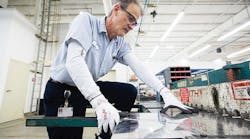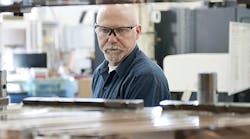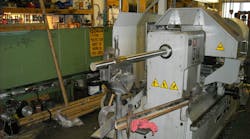Over the past half decade, economic growth in the U.S. coupled with increased competition across the manufacturing industry has significantly increased the pressure on operations to produce more, in less time, in order to meet growing demand and increasing competition. While businesses are rightly focused on strategies that enhance their speed to market in order to meet changing consumer demands, manufacturing operations are simultaneously experiencing demands from another critical audience — workers — around an issue that is gaining greater attention: workplace safety.
We’ve seen that increased awareness among employee populations along with stricter national and global safety standards has placed a greater emphasis on safety in the workplace. It is a trend that is presenting challenges and opportunities for risk managers. Globally, projections show that rapid industrialization and increased governing of safety standards are fueling the industry-wide demand for personal protective equipment (PPE)1.
Recent data shows that of the 502,800 nonfatal workplace injuries that occurred in the manufacturing industry in 2013, nearly 30% occurred in the primary metal, fabricated metal products and machinery manufacturing sectors2. In the most demanding industrial environments, the need for greater cut protection, dexterity, and comfort for one of a worker’s most valuable assets – their hands – is as important as ever.
So, it is no surprise that cut protection is the fastest growing segment in the global industrial glove market.
And from a business standpoint, the cost of a hand injury is significant. Injuries from cuts cost companies millions annually and remain a preeminent concern of global risk managers whose number one job is to keep workers safe. As producers of PPE solutions, we have a responsibility to increase safety for workers while reducing costs for safety managers. The need for constant innovation in safety product development is critical in order to address the rapidly changing demands of industrial workplaces, worldwide.
It is the job of providers to become a more informed about what users need to do their jobs, and do them safely, especially as demands in the workplace continue to grow. To that end, a question we should constantly be asking ourselves is: How can we change our product development process to address more complex industrial work environments and meet growing safety needs to deliver optimal protection and productivity?
Engage in Active Discussions with Users — While it’s important to know what manufacturers want, it is critical to know what their employees need. This requires us as providers to actively engage, listen to, and then act on feedback solicited directly from workers who can tell us exactly what they want and need in a product to feel safer and be more productive while on the job. What we’re learning through these conversations is a nearly universal finding that isn’t all that surprising: workers are proud of the work they do, and they want to do it better.
For industrial workers, performance translates directly to productivity. Simply put, the ideal glove cuts down on uninterrupted work, fatigue and frustration, and enables greater efficiency and delivers real results. Comfort is often overlooked, but is equally important. Gloves need to protect and perform, but during an eight-hour shift they also need to feel like an extension of the user.
Apply Workplace Analytics to Glean Insights to Productivity — When it comes to selecting safety solutions for your workforce, it’s not just about buying the most or least expensive products; it’s about finding the right glove for the right job, and this must be informed by real stats and data pulled directly from the workplace. For example, at an automotive plant in Michigan, where employees engage in several metalworking processes, there is a wide range of jobs with varying degrees of protection needs. These nuances must be taken into considerations, and can’t be solved by a one-size-fits-all solution.
Metric-driven workplace assessments that take a long view of the role of protection in any industrial environment can help companies identify the right protection solutions to optimize safety and operational performance for any project. The insights from this type of analysis can also help increase the life of a glove, and helps customers realize overhead cost savings and increases worker productivity without sacrificing everyone’s number one priority: worker safety.
This approach to uncovering important workplace insights can help drive real innovation around the development of protection solutions which are necessary to meet the requirements of the world’s most demanding industrial workplaces. By understanding better user preferences and the interplay of worker safety with workplace performance, we can be more effective at managing cut-protection innovation, intelligence, and resources to predict and meet the changing safety needs of industrial workers across the globe.
1. Report Buyer, Personal Protective Equipment Market - Global Industry Analysis, Trend, Size, Share and Forecast 2014 – 2020, 2014
2. Bureau of Labor Statistics, U.S. Department of Labor. Employer-Reported Workplace Injuries And Illnesses News Release. 2012.









